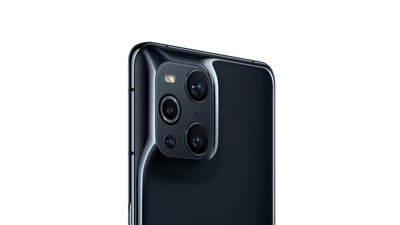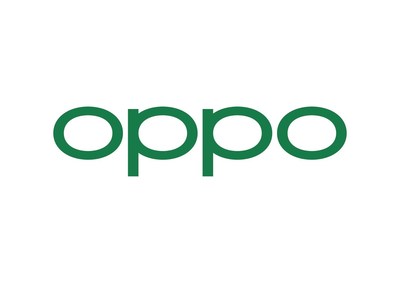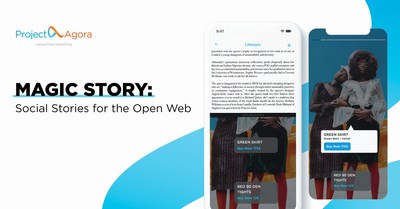Ethiopia has swept up thousands of ethnic Tigrayans into detention centers across the country on accusations that they are traitors, often holding them for months and without charges, the AP has found.
The detentions, mainly but not exclusively of military personnel, are an apparent attempt to purge state institutions of the Tigrayans who once dominated them, as the government enters its sixth month of fighting in the Tigray region. Detainees, families and visitors spoke of hundreds or even more than 1,000 people in at least nine individual locations, including military bases and an agricultural college.
The government of Nobel Peace Prize winner Abiy Ahmed acknowledges that it has locked up a small number of high-level military officials from the Tigrayan minority. But the AP is reporting for the first time that the detentions are far more sweeping in scope and more arbitrary, extending even to priests and office workers, sometimes with ethnic profiling as the sole reason.
A military detainee told the AP he is being held with more than 400 other Tigrayans, and lawyers are not allowed to contact them. Even families can’t visit. The AP is not using his name for his safety but has seen his military ID.
“They can do what they want,” he said on a smuggled phone. “They might kill us….We are in their hands, and we have no choice but to pray.”
Many of the military personnel were not combatants but held jobs such as teachers and nurses, according to interviews with 15 detainees and relatives, along with a lawyer and a camp visitor. Civilian employees of state-owned companies also have been held. The arbitrary locking up of non-combatants is against international law, according to the International Committee of the Red Cross, which has met with family members of detainees but declined to answer questions.
Conditions vary, but some detainees are given just one meal a day and crowded dozens to a room in sweltering metal shelters, at a time when COVID-19 infections are rapidly rising in Ethiopia. Families worry that needed medications are withheld. Detainees and families the AP tracked down did not directly witness beatings or other such physical abuse, but almost all asked not to be identified out of fear for their lives.
Once detained, the Tigrayans often end up in Ethiopia’s opaque military justice system. That means they can lose the right to private lawyers and face judges who one lawyer said tend to hand out the maximum penalty. With fewer means to challenge their detention, detainees say they feel helpless, their fate in the hands of the people who accuse them of treason.
One Tigrayan living in the United States said she could understand war between soldiers but objected to the detention of two cousins with non-combat roles in communications and peacekeeping. One hasn’t been seen or heard from since November.
“Is the danger in their blood? In their DNA?” she asked. “I thought they were Ethiopians.”
The mass detentions and house arrests are an extension of the war in the Tigray region marked by massacres, gang rapes, expulsions and forced starvation, which witnesses call a systematic effort to destroy the Tigrayan minority of more than 6 million. The detentions are all the more striking because Abiy was once praised for releasing thousands of political prisoners in a country long known for locking up people deemed a threat.
Tigrayans are further targeted by state media reports amplifying the government narrative of pursuing Tigray “criminals” and their supporters. Family members of detainees are sometimes stripped of their jobs, kicked out of military housing and subjected to frozen bank accounts.
Tigray leaders were prominent in Ethiopia’s repressive government for nearly three decades and are blamed by Abiy and others for fostering sometimes deadly ethnic politics, but they were sidelined when he took office in 2018. After national elections were delayed last year, they held their own vote in Tigray and called Abiy’s government illegitimate. Ethiopia then accused Tigray fighters of attacking a military base and launched an offensive, unleashing a war that has killed thousands.
Ethiopia’s government is “only after the top leadership” of Tigray’s former rulers, the minister for public diplomacy at the country’s embassy in Britain, Mekonnen Amare, told the AP. “So there is no such thing as mass detention or mass abuse of rights.”
But in a leaked video posted online earlier in the war and verified by the AP, a senior military official said of Tigrayans, “We had to clean out our insides. … Even if there may be good people among them, we can’t differentiate the good from the bad. To save the country, we made it so they were excluded from doing work.” Now the security forces were “completely Ethiopian,” Brig. Gen. Tesfaye Ayalew said in what appeared to be an internal briefing.
Ethiopia’s attorney general’s office, which has said it would set up a hotline to report ethnic profiling, did not respond to questions from the AP, and neither did a military spokesman. The U.S. State Department said it could not confirm reports of people detained in camps, but noted that it has paused most security assistance to Ethiopia because of concerns over the Tigray crisis.
Another Tigrayan who spoke to the AP from custody, his voice hushed on a borrowed phone, said he is being held without charges along with more than 30 pilots, technicians and other military personnel. He said families at times have no idea where relatives are, and his own mother still thinks he’s working, just far away. He despairs of justice in military court.
“If peace comes, maybe they’ll release us,” he said. “If not, we don’t have any future. I fear even they may kill us.” Then he hurriedly ended the call.
Estimates of the number of detainees and camps vary. More than 17,000 Tigrayans were in the military alone when the war began and have been detained, according to an estimate given to a researcher by Mulugeta Gebrehiwot Berhe, a former senior Ethiopian official and Tigrayan who founded the Institute for Peace and Security Studies at Addis Ababa University.
Along with the at least nine centers cited by detainees, families and visitors, the AP obtained three separate lists that allege several others across the country. One detainee who escaped a center in Mirab Abaya in southern Ethiopia estimated that more than 1,500 people were held there alone.
A man who visited two other centers said detainees had counted 110 people in one, mostly military commanders, and 270 in the other, many of them commandos and air force officers. Some had served in the military for more than 30 years with no history of misconduct, he said.
The visitor described 40 to 50 people living in a room made of metal sheets. The detainees told him they were not allowed to speak in groups or have family visits or phone calls, and they didn’t get enough food.
“The area is very hot, extremely hot…..they don’t look good,” said the visitor, whom the AP is not identifying further to preserve his access to the centers. He said detainees alleged that people are held in at least 20 places across the country.
“It’s scary, you know?” he said. “These people were serving their country as military personnel but were attacked by their own government….They have been identified as treasonous by the community, so they’re seriously worried about their families.”
Their families also are worried about them. A man in the capital, Addis Ababa, wept as he described not seeing or speaking to his brother, a human resources staffer with the military, for three months. His brother’s family has been evicted from military housing, he said, sharing photos of their items strewn outdoors.
“He was serving his country honestly,” the man said. “The situation is not good, not only for me but for all the Tigrayan people.”
Another detainee had been serving in a neighboring country on a peacekeeping mission when he was called home to Ethiopia and seized, his son said. He was freed on bail, and the AP has seen the federal court document for his release. But then he was sent to a military camp, accused of creating instability although he wasn’t in the country.
“I spoke with him yesterday. He sounded stressed,” his son said. “People with the military gave him the phone in secret. He’s a proud person. It’s unsettling to hear him like that.”
His father has lost about 10 kilograms (22 pounds) because of the lack of proper food, he said.
The transfer of people into the military system after being released on bail in the federal courts is illegal, said a lawyer in the capital, Tadele Gebremedhin, who has worked on more than 75 cases involving detained Tigrayans from the military and federal police. He said detainees at one center he visited on the outskirts of the capital sleep about 25 to a room, get food once a day and are denied family visits.
“They are innocent,” the lawyer said. “The only thing is, they’re Tigrayans.”
Civilians have been held, too. One employee with state-owned Ethiopian Airlines said he fled the country after being released on bail.
“We need you very badly today,” he recalled federal police saying as they took him from his home without explanation. He said he saw almost 100 high-ranking military officials during his two months in detention, from late November to late January.
Dozens of Tigrayan priests and deacons were detained in the capital, most for a month, according to Lisanewerk Desta, who leads the library and museum department of the Ethiopia Orthodox Church. He also said he has spoken with a detainee at a center near Harar who estimated that more than 2,000 military personnel were held there.
“I don’t have words. How to explain this kind of hatred?” he asked.
Beyond the camps, an unknown number of Tigrayans are under house arrest. A man described how one parent, a nurse in the military, has been barred from work since the war began and is under a curfew.
The United Nations human rights office said it was aware of reports of arbitrary detention of Tigrayans but did not have reliable estimates “given the lack of transparency.”
The government-created Ethiopian Human Rights Commission did not answer questions, instead sharing recent statements on Tigrayan detainees and ethnic profiling. In a statement this week, the commission said the denial of fair trials, family visits and medical treatment is “still rife” at several detention centers, and detainees are often unable to tell families where they are.
The commission spoke earlier this year with 21 detainees at a federal police center in the capital, with some describing “lengthy pre-trial detention periods and being subjected to insults, threats, beatings and to physical injuries from shots fired at the time of their capture.” However, the commission said detainees were in good health and the conditions of detention met acceptable standards.
Tigrayans dispute that. In neighboring South Sudan, more than a dozen members of the United Nations peacekeeping mission refused to board a flight home in February when their stay ended.
For detainees, it is unclear what happens next. Two people told the AP that a campaign to “re-educate” them has begun, including lectures promoting Abiy’s political party. One person said their cousin had gone through the training, and another said their relative had been told it would start soon.
The risk for the government is that the detentions could turn Tigrayans who once swore their loyalty into active opponents.
Teklebrhan Weldeselassie, an air force pilot, said he and colleagues were accused of being in contact with Tigray’s now-fugitive leaders. He escaped house arrest and fled Ethiopia, but he said colleagues have told him they are among an estimated 1,000 Tigrayans detained near the air force headquarters in Debre Zeit.
Once shocked by being suspected as a traitor, he is so horrified by Ethiopia’s treatment of Tigrayans that he now says he would consider taking up arms.
“Before, I didn’t plan to fight on the side of Tigray,” Teklebrhan said. “At this time, if I get a chance, yeah, of course I would defend my people.”
Source: Voice of America
 وتعمل العدسة الدقيقة، التي تلبي فضول الإنسان في المعرفة والاستكشاف، على تكبير الصورة بصرياً بمقدار 30 مرة، و60 مرة مع التكبير الهجين، لتتفوق بذلك على الطريقة التقليدية للتصوير عن قرب. وتوفر تقنية التكبير المجهري إمكانية التقاط صور بكفاءة عالية من حيث اللون والشكل والحجم والمقياس. وقد تم طرح العدسة الدقيقة في هاتف ذكيّ لأول مرة من خلال
وتعمل العدسة الدقيقة، التي تلبي فضول الإنسان في المعرفة والاستكشاف، على تكبير الصورة بصرياً بمقدار 30 مرة، و60 مرة مع التكبير الهجين، لتتفوق بذلك على الطريقة التقليدية للتصوير عن قرب. وتوفر تقنية التكبير المجهري إمكانية التقاط صور بكفاءة عالية من حيث اللون والشكل والحجم والمقياس. وقد تم طرح العدسة الدقيقة في هاتف ذكيّ لأول مرة من خلال  تم تطوير الجزء الخارجي من المصباح الدائري حول العدسة باللون الأسود ليلائم التصميم المميّز للهاتف، إلا أن نسبة سطوع الضوء عبر عدسة سوداء اللون قد تؤثر على جودة التصوير. بالرغم من ذلك، قام مهندسو
تم تطوير الجزء الخارجي من المصباح الدائري حول العدسة باللون الأسود ليلائم التصميم المميّز للهاتف، إلا أن نسبة سطوع الضوء عبر عدسة سوداء اللون قد تؤثر على جودة التصوير. بالرغم من ذلك، قام مهندسو 
